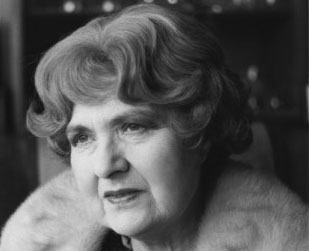THE EMBROIDERERS’ GUILD BERYL DEAN AWARD FOR TEACHING EXCELLENCE IN EMBROIDERY AND DESIGN IN TEXTILE ART
November 2011 The Embroiderers’ Guild announces a new Award for the teaching of embroidery in honour of Beryl Dean and in partnership with the Beryl Dean Education Trust.
March 2012 A Project Team assembles. Three outstanding embroidery experts have agreed to steer the Award from concept to reality, all knew Beryl well and worked with her over many years. Elizabeth Elvin, Diana Springall and Anthea Godfrey joined Terry Murphy, Guild CEO, Robert Phillips and Thelma Nye, Executors of the Beryl Dean Estate and Diana Phillips, her Archivist for the first of many meetings. The aim: to develop a well-founded, inspirational and aspirational award that will encourage and celebrate embroidery teachers through the next decade.
September 2012 The Award is announced in Embroidery Magazine, readers are invited to participate in its development. In October the Beryl Dean stand at the Knitting and Stitching Show raises the profile of the Award with leaflets, research questionnaires and discussions.
March 2013 Criteria for judging applications are drawn up. Judy Barry conducts a peer review and offers a constructive critique. The Beryl Dean Award will go to a teacher who is personally passionate, professionally inspirational and highly competent, recognised by students and peers in their own professional context and making a contribution to the wider field of the arts and crafts.
Application forms and instructions are finalised. Two respected academic judges are selected and everyone is gratified when Professor Clare Johnston (Head of the Textiles Programme at Royal College of Art) and Professor Malcolm Lochhead, (Textile artist and Millennium Fellow in Design at Glasgow Caledonian University) agree to take part.
April 2013 The Award is launched at the Embroiderers’ Guild AGM. The May edition of Embroidery Magazine invites applications for the inaugural year of the Award, the prize, a £1000 grant to help inspire the winner to take their practise and teaching to an even higher level. The Embroiderers’ Guild publishes details of the award on their website.
January 2014 Thirteen applications are assessed by the Project Team against the criteria, and a shortlist of four is selected to go forward for interview by the judging panel. The process yields a worthy winner, the result is to be a closely guarded secret until the Embroiderers’ Guild AGM in April.
The judges were impressed with the passion, commitment and skills of all the applicants. Each one was making a valuable contribution to upholding standards of excellence in embroidery and to the institution where they worked. The criteria worked well to differentiate between candidates. There was useful learning on how clarity in the application instructions could be improved.
Next Steps
Through the development process, thinking on the Award has moved on. The early choice of a teaching award has been proved prescient by our research into the state of embroidery education and art education generally.
Disturbing trends have appeared in recent years that undermine the rich textile education provision in the UK in higher, further and adult education. Adult education has gone, further education is sketchy and we are seeing the demise of dedicated textiles degrees across the board. Some areas have been subsumed into other departments with the inevitable effect of weakening expertise over time. We stand to lose all the very sophisticated levels of understanding and respect for textile art and the high standards of creativity and skill that have resulted from a long period of development since the second world war. Action to support the teaching of textile art is needed now by those who care about our craft.
– Anthea Godfrey.
It became apparent that other features of the former infrastructure were facing challenges, for example craft organisations and cathedral broderers groups. Feeling has strengthened that there needs to be a focus for efforts to bring together those who care about the infrastructure for embroidery and textile arts and those who are able to help to sustain and develop it for the future. And it seemed that the Award Presentation could be just such an event, able to present an increasingly accurate annual snapshot of the state of embroidery teaching from the results of the competition for reflection, discussion and action.
The crypt of St Paul’s Cathedral London, scene of Beryl’s two seminal exhibitions in 1968 and 1990 was chosen as the best place for the inaugural presentation, the Project Team was thrilled and honoured when the Dean and Chapter agreed and it took place on Monday 7th April 2014.


